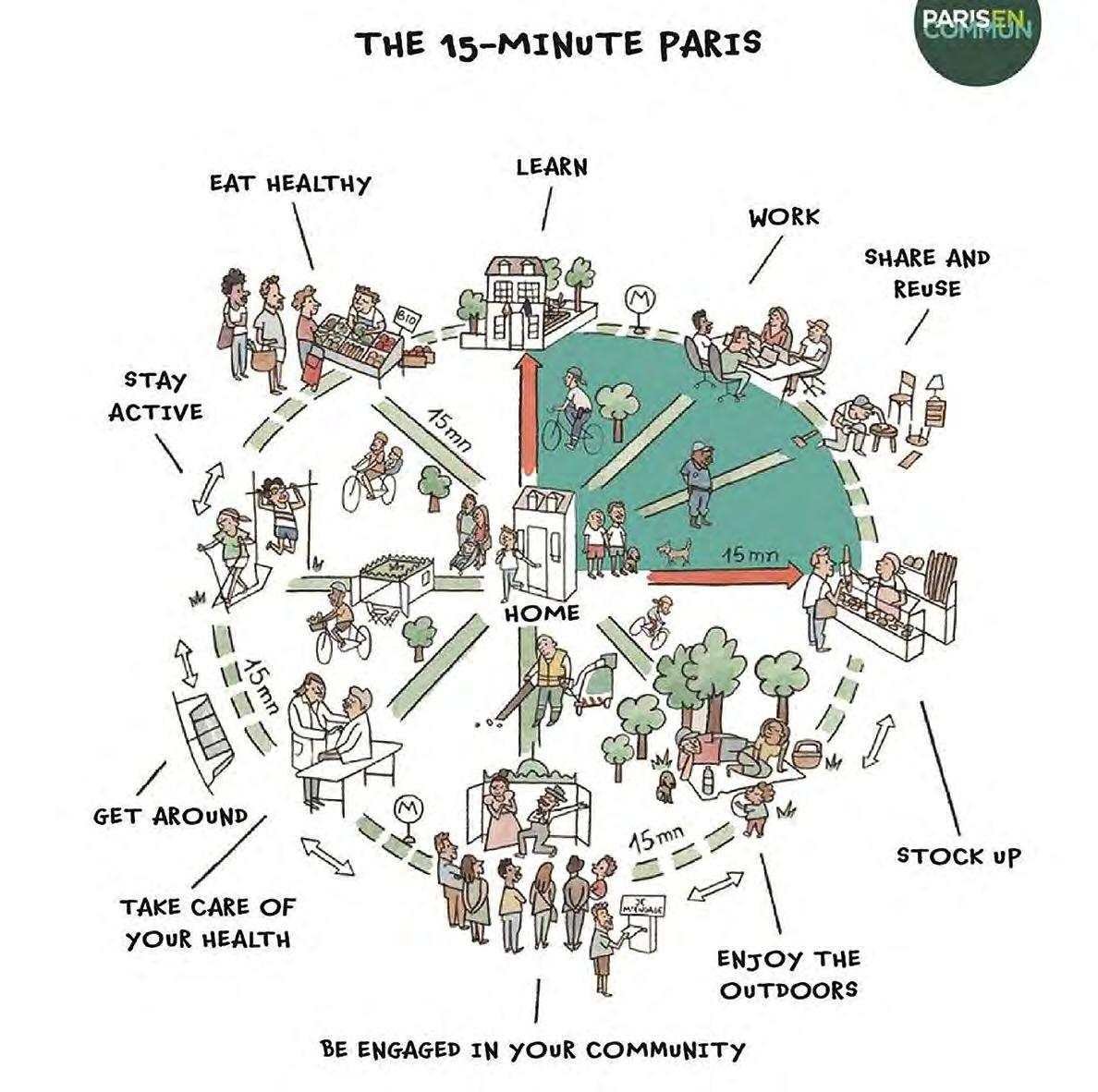
2 minute read
Proximities and the ‘Right to the City’
Carlos Moreno (2022) wrote ‘La Revolución de la Proximidad’ or ‘the revolution of proximity’, where he identified the primacy of private cars, asphalt and hard environment as contributors to the de-humanisation of cities, due to the disequilibrium between the environment created with cars and the loss of social interaction. In his reflections, he identified the proximity as a virtue of the city and the distance as a vice.
Le Corbusier (La Ciudad de Los Quince Minutos, 2023), on the contrary, agreed that the city and its zoning was the ideal program for planning a city, as humans would live, work and recreate in distant well-defined areas that would not feel so distant due to the use of private cars and the associated infrastructure that would facilitate movement. It was thought then that distances would be overcome by technology and infrastructure, but nowadays we have realised that distance is a problem as it does not only lead to negative impacts of pollution, use of land, etc. but to the waste of time of those moving with the counter-productive effect of loss of social interaction, care and enjoyment of living in a community. All of these, detract from the quality of life of humans and it is my view that urban design and development in general should take an approach in which it facilitates living in short distances to our daily needs as well as it discourages unnecessary private car travelling.
Advertisement
I find Moreno’s diagnosis to be fully applicable to the chosen site in Lewes, as it is a large car park that facilitates traveling long distances by car, therefore cutting distances, but conditioning the time that citizens spend travelling, which increased significantly since the car became available and dictated in which ways we plan and live our cities. This car park has also clear implications, mostly negative, on the wider environment of Lewes. It contributes to air and noise pollution and has resulted in a tabula rasa in which the pre-existing natural environment is non-existent.
It is important to understand the reason why the car park was there in the first place: it serves the railway station and it helps connecting those living or working in in less accessible areas around Lewes and benefitting from a multimodal car and rail travel.
Lewes, due to its size and relatively compact centre, could be considered a ‘15 minute city’ as it has many services needed by people in a daily basis. However, what I am assessing this time is how this site in particular, in Moreno’s context, contributes towards it or against it. How can the Lewes Car Park Site make Lewes flourish as a town where all daily activities are accessible and available within public transport, walking and cycling distance?
I believe that the car park could contribute more towards a ‘town of proximities’ and with it, embrace citizens’ right to the city, the right of appropriation of the city: to access, to occupy, to use and to maximise the public benefits of the city and its public space rather than being an area for a prioritised group of people.










